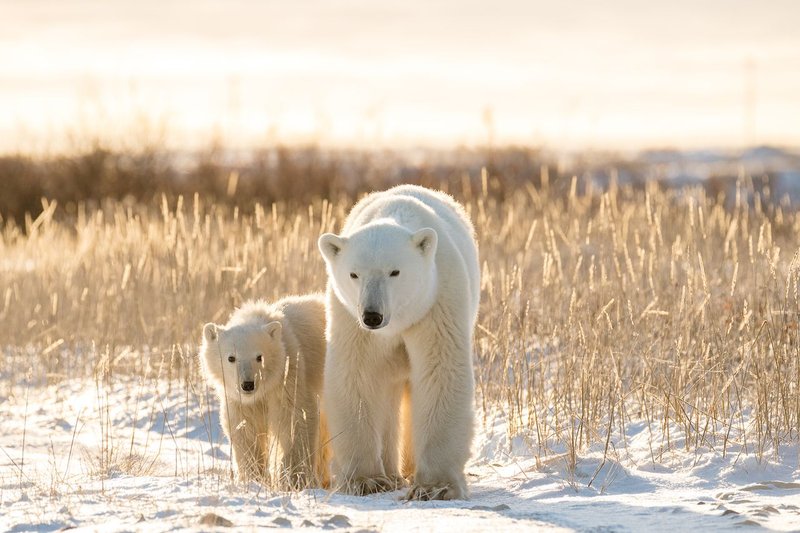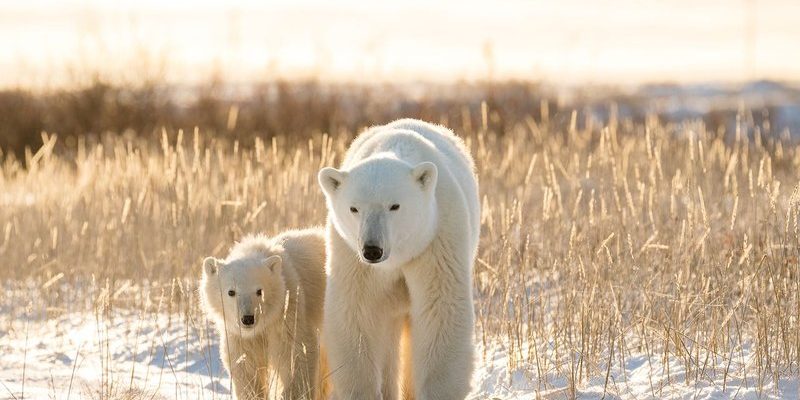
Polar bears are fascinating yet powerful creatures. While they may seem cute from a distance, their sheer size and strength can be intimidating. It’s crucial to understand how to respond to ensure your safety and the bear’s well-being. So, if you ever find yourself face-to-face with one of these majestic animals, don’t panic. Let’s break down the steps you should take.
Stay Calm and Assess the Situation
The first thing to remember when encountering a polar bear is to stay calm. I know, easier said than done, right? Taking a deep breath and observing the bear is vital. Is it actively approaching you? Does it seem curious or aggressive? These details will guide your actions.
– Watch its body language. Polar bears express emotions through their posture. If it’s standing tall, scanning the area, it might just be curious. If it’s low to the ground, ears back, or making huffing noises, it could feel threatened.
– Avoid sudden movements. You might be tempted to run away, but this is the worst reaction. Bears can run much faster than humans—up to 25 miles per hour! Sudden movements might provoke a chase.
By staying calm and keeping your eyes on the bear, you can gather essential information for your next steps.
Back Away Slowly
If the bear doesn’t seem aggressive but is still too close for comfort, it’s time to back away slowly. Think of it like a game of reverse hide-and-seek. The goal is to create distance without startling it.
– Maintain eye contact. Don’t turn your back on the bear; keep your eyes on it as you move.
– Move away gradually. Take small steps back while keeping your body facing the bear. This movement should be deliberate and slow, avoiding any sudden jerks.
– Keep your voice low and calm. Talking softly can help signal to the bear that you’re not a threat. A gentle tone might even reassure it.
By backing away slowly, you reduce the risk of alarming the bear further and give it space to feel comfortable.
Make Yourself Look Bigger
If the bear shows signs of aggression, it’s time to focus on making yourself look bigger. This might sound odd, but bears often back off when confronted with something they perceive as larger than themselves.
– Raise your arms. Stretch your arms out wide or hold your backpack over your head. It’s all about creating an illusion of size.
– Use gear to your advantage. If you have poles or other equipment, raise them as well. This visual can help deter the bear from coming closer.
– Stay upright. Don’t crouch or sit down. Keeping your body vertical enhances that ‘big, intimidating’ effect.
Making yourself appear larger can often encourage the bear to feel less threatened and more inclined to retreat.
Carry Bear Deterrents
If you’re venturing into polar bear territory, it’s a good idea to be prepared with some bear deterrents. Think of these as your safety net while you explore the wilderness.
– Bear spray. This is a popular and effective deterrent. Bear spray is like pepper spray, designed to deter bears without causing long-term harm. Just remember to practice using it safely before your trip.
– Noise makers. Some hikers carry small air horns or other noisemakers. Bears are generally scared of loud, unfamiliar sounds.
– Travel in groups. There’s safety in numbers. Bears are less likely to approach a larger group compared to an individual.
Having these deterrents available can give you peace of mind while exploring the wild.
Understand Polar Bear Behavior
To handle an encounter effectively, it helps to understand a bit about polar bear behavior. This knowledge can inform what you do next.
– Curiosity vs. Aggression. Polar bears are naturally curious. If they approach, they are often trying to investigate rather than attack. However, if they sense a threat, they can become aggressive.
– Hunting instincts. While polar bears do eat seals primarily, they can see humans as potential food, especially if they are hungry. This is why staying calm and making yourself look bigger is essential.
– Seasonal behaviors. Behavior can vary depending on the time of year. In summer, bears might be more active in search of food, whereas they tend to be more moderate in winter.
By understanding these behaviors, you can better assess the situation and choose your actions accordingly.
Report the Encounter
Once you’re safely away from the bear, it’s crucial to report the encounter. This step helps protect others who might venture into the same area.
– Contact local authorities. Notify wildlife officials or park rangers about your sighting. They can track bear activity and alert others if necessary.
– Share details. Providing specifics about the bear’s location, behavior, and any other important information can help others in the area stay safe.
– Use social media wisely. If you’re in a managed park, consider posting about your encounter online. Make sure to tag the appropriate organizations so they can act on it.
Reporting helps ensure that future encounters are managed better, keeping both humans and bears safer in the long run.
Educate Yourself Beforehand
Preparation is key, so learning about polar bear safety before your adventure is super important. Here’s how you can get started:
– Take a workshop. Many outdoor organizations offer courses on wildlife safety, including bear encounters. These can provide invaluable hands-on experience.
– Read up on safety guidelines. Familiarize yourself with recommended practices for polar bear safety. Knowledge is power, and being informed can help reduce panic during an encounter.
– Connect with local experts. If you’re traveling to polar bear territory, speak with local guides or rangers. They can offer firsthand insights and tips specific to the area.
Educating yourself beforehand not only prepares you for potential encounters but also enriches your overall experience in these stunning environments.
Encountering a polar bear in the wild can be an exhilarating yet frightening experience. However, knowing what to do could make all the difference between a safe escape and a potentially dangerous situation. Remember to stay calm, assess the situation, and back away slowly. Making yourself look bigger and carrying bear deterrents can also help in the moment.
Ultimately, educating yourself about polar bear behavior and reporting any encounters can contribute to both your safety and the protection of these magnificent creatures. With the right preparation, you can enjoy the beauty of the wild while minimizing risks. So next time you set foot in polar bear territory, you’ll have the confidence to navigate your adventure wisely!

